The MAR-290 is an Israeli 290 mm (11.4 in) single-stage, ground-to-ground, multiple launch rocket system manufactured by Israel Military Industries, introduced in 1973. It was based on the Soviet-made 240 mm (9.4 in) BM-24 MLRS which many were captured in 1967. Its maximum range is 42 km (26.1 mi) either HE "Eivri" or cluster "Chaviv" warhead. Three vehicles were used as base successfuly, the first being M4 Sherman chassis updated by IMI. The Centurion was created later in 1982 and another base on the M548. The launcher is called "Episkopi". both being tested by the Israeli Defence Force in the late 1970s. They saw combat in Lebanon in 1982 and afterwards.
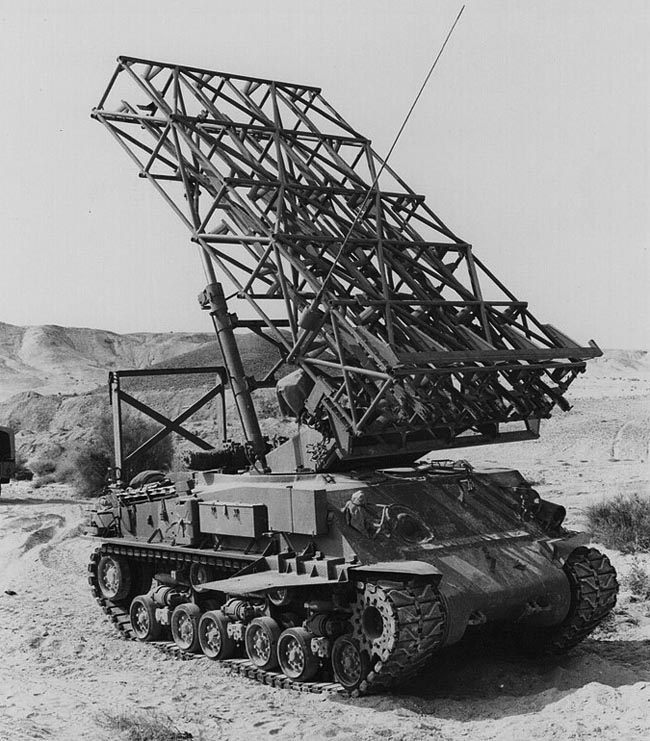
During the Yom Kippur war, as a result of the occupation of the Hermon plateau by the IDF, no rockets were used. The real drive were the lessons of the Six Day War and seizure of a cache of rocket used by the Syrian and Egyptian. It was decided by the IDF staff to develop a rocket launcher that would meet their own needs since they had ranges beyond traditional artillery.
In 1973, the development of the new IDF rocket was completed, entering service, which was the first and only rocket system developed in the West at that time, well befote the M270 MLRS enterd service. Israeli Industries started to develop and produce the "Evri-1" for the Artillery Corps as a single-stage solid fuel-driven rocket. It had an explosive warhead with fragmentation, and stabilization with wings and by initial spin by the launcher.
Ivri ("Hebrew") 29 cl rocket
The standard warhead consisted of a hard bolt (31-DM) and glass fiber cone containing 38 kg of explosive and 42,000 shrapnel pieces with an average diameter of ¼ inch, cast in epoxy. The overall weight of the warhead was 113 kg, and effective radius 80 meters. Maximum range was 42 km.
The rocket was carried on a 4-barreled "Episcopi" self-propelled launcher based on the Sherman at first. The launcher resembmed the framed system used already on the Soviet BM-24. The final vehicles were to be deployed in batteried of 4-6 launchers, operated by a crew of 4 (5 on other sources). On the initial Sherman used as prime mover, the launcher is facing rearwards, articulated on a ramp installed on a platfom sitting on the turret ring and driven the same way as the former turret. The arrow like ramp's end comprises a main hinged articulation on which sat the launcher. It its lifted up and down at the other end by two hydraulic arms. While underway, the frame launcher sat on a travel lock at the tail end of the Sherman.
The rest of the M51 sherman is identical, apart the upgrade made by IMI as to fit in the engine compartment the new Cummins VT-8-460 diesel shared by the M48. The crew of 4 is likely to sat aboard, in the main ramp/turret pannier. Apart the driver there is one main operator and loaders ready to assist for later reloads. In fact the commander, the mechanic-driver and two operators are tasked with calculation and angles from the fire control.
The rocket was called "Hebrew" and these four 290 mm rockets cuould carry regular HE, JHE-Frag or anti-personal warheads as seen above, while the rocket itself is 5.45 m long for 600 kgs but unguided. It is stabilized by its initial spin and wings so having a limited accuracy past 25 km. The engagement time is 10 seconds once the vehicle stops in position. The reloading process lasts for 10 minutes. Self defence is assumed by a 7.62 mm LMG and personal weapons.
-MAR 290 MLRS dor sheni (1982) based on the Sho't (earlier variants), tubular guides, 20 retained in service (in park) today.
The IDF obtained 64 M270 MLRS called locally "Menatetz" or "Smasher".
On October 6, at a hearing held in the office of the MoD headed by Moshe Dayan, esxamined if the "Hebrew" rocket system was ready for combat. It was supposed to be stationed at the Hermon outpost and from there, reach the entrances of Damascus. The battery was deployed at the beginning of the Yom Kippur war, but before the conquest of Hermon by the Syrians, the battery fell and was not used.
Ronan Bergman published that, according to foreign media, "Hebrew" is another name for the "Jericho" surface-to-surface missile, (nuclear tipped) but this was denied.
After the Yom Kippur War, regular supply of the MAR-290 to the artillery corps started and the new system took part actively first in the "Peace in Galilee" operation and Lebanon war from 1982 onwards. Lessons learned from its use formed the basis for the development of the US M270 MLRS and other systems. Today as of 2025 the MAR-290 park had been long retired, but two vehicles survived in the Yad-la-Sharon museum.
290 mm surface-to-surface rocket system, in: Yosef Evron, The Defense Industry in Israel, Ministry of Defense - Publishing House, 1980.
Ronen Bergman and Gil Meltzer, The Nuclear Secret of the Yom Kippur War, Ynet website
militaryperiscope.com
archives.gov.il
militaryfactory.com/
shiryonarchive.com
he.rafael.co.il
israeli-weapons.com
en.wikipedia.org
en.missilery.info
he.wikipedia.org

Development and design of the MAR-290
IDF (Israel Defense Forces) lacked comparable MLRS in 1967 especially given those featured by Arab countries. In the conflict of 1967 and before the 1973 Yom Kippur war, many 240 mm rockets produced by the Soviet Union were captured, courtesy of the numerous BM-24 Katyusha systems deployed, most often from ZIL-151/157 trucks in service with Syria and Egypt. These captured rockets were stored in Hermon and deployed on ad-hoc launches at first to threaten Damascus, in order to deter and, if necessary, to respond to a Syrian missile attack. Other sources stats development started as early as 1965 with Initial Operational Capability in 1968.During the Yom Kippur war, as a result of the occupation of the Hermon plateau by the IDF, no rockets were used. The real drive were the lessons of the Six Day War and seizure of a cache of rocket used by the Syrian and Egyptian. It was decided by the IDF staff to develop a rocket launcher that would meet their own needs since they had ranges beyond traditional artillery.
In 1973, the development of the new IDF rocket was completed, entering service, which was the first and only rocket system developed in the West at that time, well befote the M270 MLRS enterd service. Israeli Industries started to develop and produce the "Evri-1" for the Artillery Corps as a single-stage solid fuel-driven rocket. It had an explosive warhead with fragmentation, and stabilization with wings and by initial spin by the launcher.
Final design

Ivri ("Hebrew") 29 cl rocket
The standard warhead consisted of a hard bolt (31-DM) and glass fiber cone containing 38 kg of explosive and 42,000 shrapnel pieces with an average diameter of ¼ inch, cast in epoxy. The overall weight of the warhead was 113 kg, and effective radius 80 meters. Maximum range was 42 km.
The rocket was carried on a 4-barreled "Episcopi" self-propelled launcher based on the Sherman at first. The launcher resembmed the framed system used already on the Soviet BM-24. The final vehicles were to be deployed in batteried of 4-6 launchers, operated by a crew of 4 (5 on other sources). On the initial Sherman used as prime mover, the launcher is facing rearwards, articulated on a ramp installed on a platfom sitting on the turret ring and driven the same way as the former turret. The arrow like ramp's end comprises a main hinged articulation on which sat the launcher. It its lifted up and down at the other end by two hydraulic arms. While underway, the frame launcher sat on a travel lock at the tail end of the Sherman.
The rest of the M51 sherman is identical, apart the upgrade made by IMI as to fit in the engine compartment the new Cummins VT-8-460 diesel shared by the M48. The crew of 4 is likely to sat aboard, in the main ramp/turret pannier. Apart the driver there is one main operator and loaders ready to assist for later reloads. In fact the commander, the mechanic-driver and two operators are tasked with calculation and angles from the fire control.
The rocket was called "Hebrew" and these four 290 mm rockets cuould carry regular HE, JHE-Frag or anti-personal warheads as seen above, while the rocket itself is 5.45 m long for 600 kgs but unguided. It is stabilized by its initial spin and wings so having a limited accuracy past 25 km. The engagement time is 10 seconds once the vehicle stops in position. The reloading process lasts for 10 minutes. Self defence is assumed by a 7.62 mm LMG and personal weapons.
Variants
-MAR-290 MLRS Ivry (1973), based on the Sherman M51. Framed launcher, 100 procured.-MAR 290 MLRS dor sheni (1982) based on the Sho't (earlier variants), tubular guides, 20 retained in service (in park) today.
The IDF obtained 64 M270 MLRS called locally "Menatetz" or "Smasher".
Active Service
At the October 3 hearing with the Prime Minister, Defense Minister Moshe Dayan said that in the event that the Syrians would fire rockets or severely damage the settlements in the north of the mountains in Israel's possession, the "Hebrew" is capable of reaching the entrances of Damascus. The Chief of Staff said that this is an immediate retaliation capability:..I believe that the amount of tanks and how many artillery batteries and the readiness of the Air Force as it is with us and yes - we have a new "Hebrew" missile, which can be used to reach the entrances of Damascus, in case they activate the "Prog", or seriously damage the settlements, we have an immediate reward, And I think these are reasonable measures.
On October 6, at a hearing held in the office of the MoD headed by Moshe Dayan, esxamined if the "Hebrew" rocket system was ready for combat. It was supposed to be stationed at the Hermon outpost and from there, reach the entrances of Damascus. The battery was deployed at the beginning of the Yom Kippur war, but before the conquest of Hermon by the Syrians, the battery fell and was not used.
Ronan Bergman published that, according to foreign media, "Hebrew" is another name for the "Jericho" surface-to-surface missile, (nuclear tipped) but this was denied.
After the Yom Kippur War, regular supply of the MAR-290 to the artillery corps started and the new system took part actively first in the "Peace in Galilee" operation and Lebanon war from 1982 onwards. Lessons learned from its use formed the basis for the development of the US M270 MLRS and other systems. Today as of 2025 the MAR-290 park had been long retired, but two vehicles survived in the Yad-la-Sharon museum.
MAR-290 specifications | |
| Dimensions (l-w-h): | 7.5 x 3.4 x 3.38 m |
| Total weight, battle ready: | 44 Tons (88,000 ibs) |
| Crew : | 4 (Driver, Operator, 2 assistants) |
| Propulsion: | Cummins Diesel 400-650 hp |
| Suspensions: | Torsion arms |
| Top Speed | 35 kph (22 mph) |
| Range (road)/Fuel consumption | 450 km (280 mi) |
| Armament (see notes) | 4x 290mm Hebrew rockets, 1x 7.62 mm LMG |
| Armour | As the original Sherman |
| Total Production | c100 |
Links
Siman Tov Shimon Sagi, 290 mm artillery rocket, always gunner 21290 mm surface-to-surface rocket system, in: Yosef Evron, The Defense Industry in Israel, Ministry of Defense - Publishing House, 1980.
Ronen Bergman and Gil Meltzer, The Nuclear Secret of the Yom Kippur War, Ynet website
militaryperiscope.com
archives.gov.il
militaryfactory.com/
shiryonarchive.com
he.rafael.co.il
israeli-weapons.com
en.wikipedia.org
en.missilery.info
he.wikipedia.org
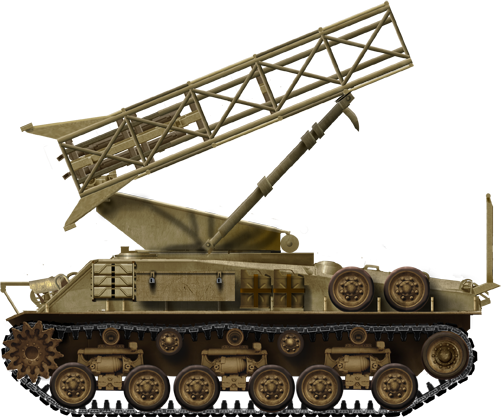
MAR-290, 1st version based on the Sherman, 1973
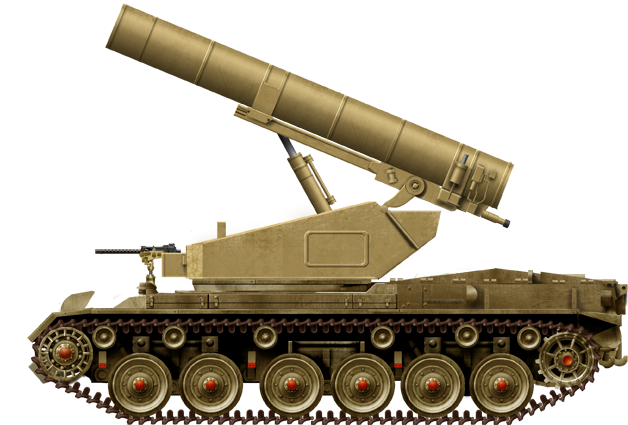
Second version based on the Centurion (sho't), Lebanon 1982
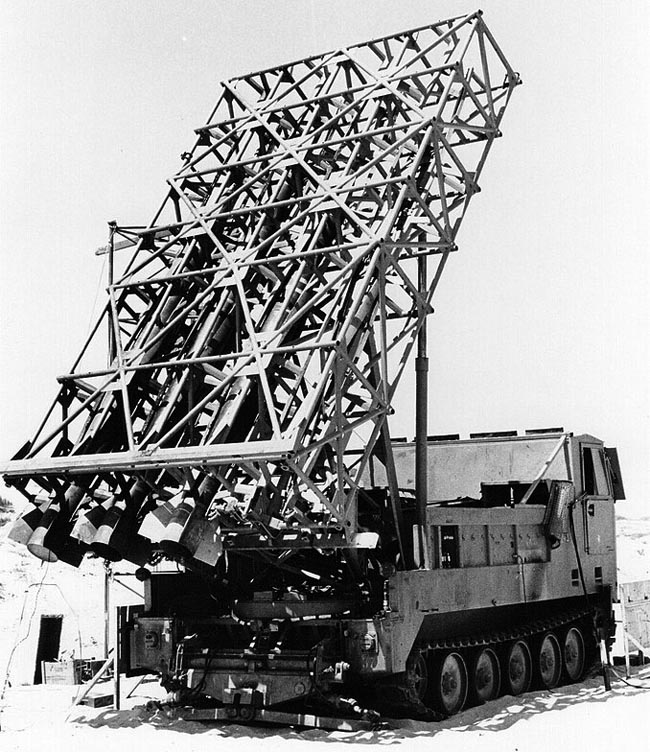
Based on the M458 (prototype only)


M51 Ivry in Beyt Hatochan
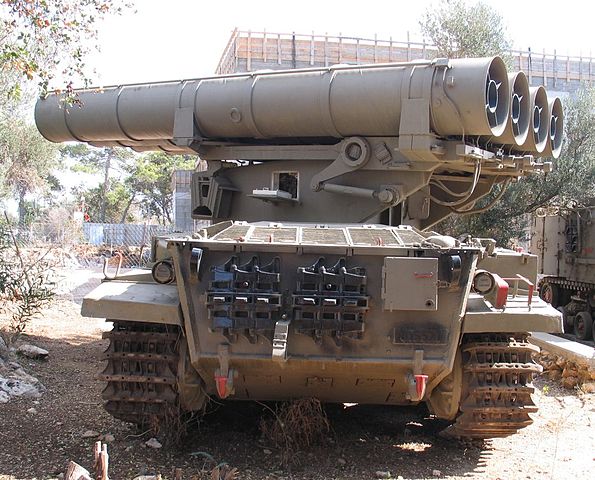
MAR-290 Centurion at Beyt Hatotchan

Cold War Tanks


































Cold war tanks posters

Cold War Main Battle Tanks

Cold War Soviet Army
Museums, Movies, Books & Games
The Tanks and Armor in pop culture
Tanks and armored vehicles in general are only really grasped when seen first person: The mass, the scale, it's all there. Explore also the way tanks were covered in the movie industry, in books and in video games.Movies:
Best tanks movie on warhistoryonline.com
On imdb.com
On bestsimilar.com/
miltours.com
liveabout.com/
watchmojo.com
Video Games:
pcgamesn.com
historyhit.com
levvvel.com
vg247.com/best-tank-games
mmobomb.com/
alienwarearena.com

